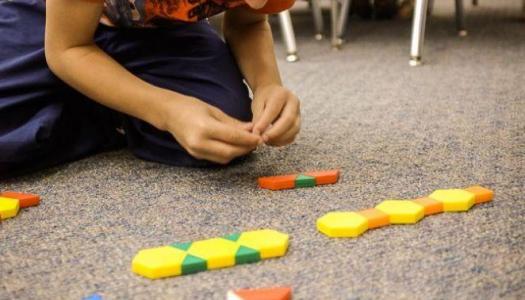Teacher-Directed Learning and Independent Assignments

Join Our Community
Access this resource now. Get up to three resources every month for free.
Choose from thousands of articles, lessons, guides, videos, and printables.
Do you have a structured curriculum with required student activities and assignments but wonder how to fit it all into your day? Balancing your instruction to incorporate necessary learning tasks while still providing opportunities for student autonomy can feel challenging. But this balance is achievable by blending teacher-directed and student-directed learning.
Let’s start with teacher-directed learning. What is it, and how can we help students engage in work that isn’t self-chosen but assigned by the teacher?
Teacher-directed learning is a structured and intentional approach where the teacher leads students through lessons and activities. In this model, the teacher takes center stage, delivering content, setting objectives, and providing clear instruction. It’s a method that, while traditional, can be highly effective. It gives teachers the opportunity to introduce new concepts, model skills, and build the foundation for independent learning.
A key part of this approach is teacher-directed independent learning assignments—tasks designed by the teacher but completed independently by students. These assignments let students practice and apply what they’ve learned in class while still being guided by the teacher’s expectations.
So, how can we ensure students remain engaged in these teacher-directed independent learning tasks? The key is making the assignments meaningful, manageable, and directly connected to the lessons. When students understand the purpose of a task and see its connection to their learning, they are more likely to take ownership of it. Clear instructions, examples, and explanations help students make sense of the assignment, allowing them to see how it fits into their overall learning goals.
Creating an environment where students thrive during both teacher-directed learning and independent assignments involves more than just handing out tasks. It requires teaching, modeling, and practicing the behaviors of engagement for independent learning. Students need to know what it looks like, sounds like, and feels like to be engaged during independent work. This means teaching them to start work right away, stay focused, keep working, persevere, and ignore distractions. By practicing these behaviors as a class, you can set clear expectations for what independent work should look like. When students have a strong understanding of these behaviors and have practiced them, they are much more likely to stay engaged and be successful during independent work.
To maximize the impact of teacher-directed independent learning, provide regular feedback and encourage students to reflect on their progress. While students are taking responsibility for their learning during these tasks, the teacher’s role is to guide them to success through feedback, encouragement, and occasional check-ins. With the right structure, teacher-directed independent learning assignments can be a powerful tool for fostering student independence, building self-reliance, and deepening their understanding of the material.





